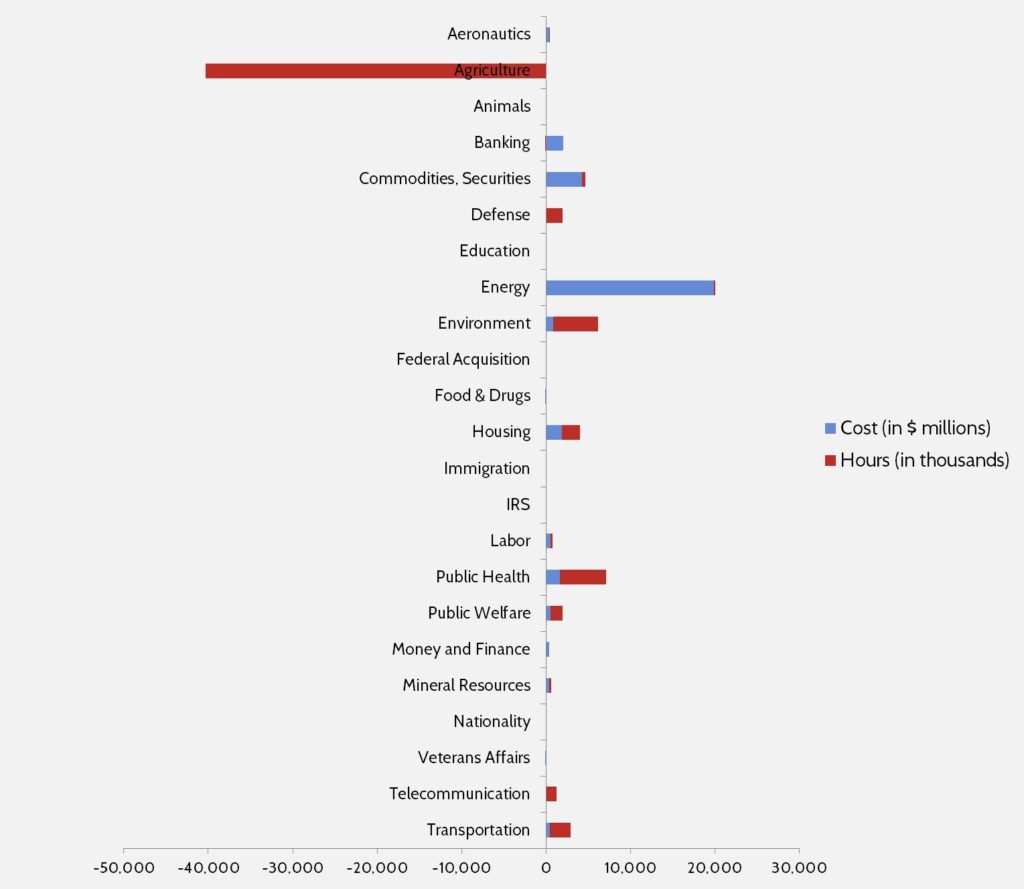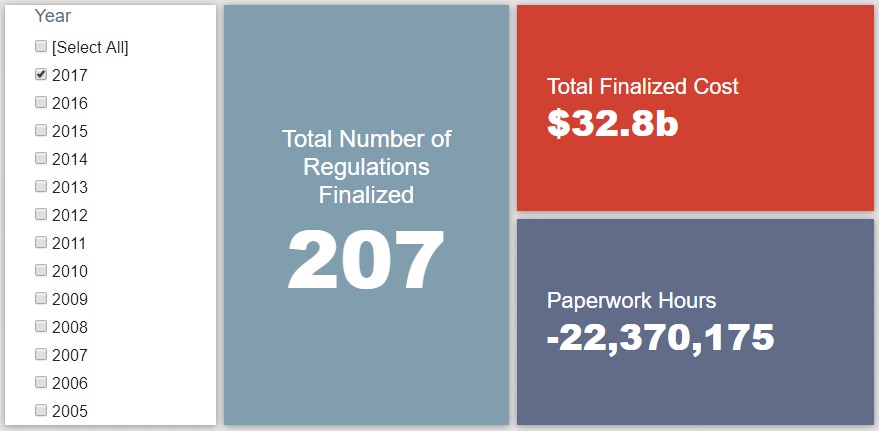Week in Regulation
October 23, 2017
Massive Deregulatory Proposal Becomes Official
The Environmental Protection Agency’s (EPA) proposed rule repealing the “Clean Power Plan” (CPP) quickly found its way into the Federal Register this week. Between an otherwise modest week in terms of new measures and the proposed reversal of President Obama’s signature climate policy, total net published costs in 2017 plunged by more than $51 billion dollars. However, agencies did add roughly 500,000 hours of new paperwork. The per capita regulatory burden for 2017 is $286.
Regulatory Toplines
- New Proposed Rules: 27
- New Final Rules: 76
- 2017 Total Pages of Regulation: 48,808
- 2017 Final Rules: $32.8 Billion
- 2017 Proposed Rules: $58.7 Billion
The American Action Forum (AAF) has catalogued regulations according to their codification in the Code of Federal Regulations (CFR). The CFR is organized into 50 titles, with each title corresponding to an industry or part of government. This snapshot of final rules (a change from earlier versions) will help to determine which sectors of the economy receive the highest number of regulatory actions.
Tracking Regulatory Modernization
As AAF noted last week, EPA released one of the most significant deregulatory measures under the Trump Administration to date. Its formal publication in the Federal Register marks the beginning of its comment period (currently running through December 15) and a lengthy road of further consideration and litigation. One of the key issues that will face fierce debate is the appropriate methodology in calculating this measure’s cost-benefit analysis. The current proposal contains an array of calculations involving various assumptions. Under the approach likely closest to the original 2015 rule’s calculus, EPA now estimates this rulemaking could bring roughly $51.6 billion in total cost savings through 2030.
In terms of other – albeit more modest – regulatory reform actions, the Department of Agriculture is withdrawing a December 2016 interim final rule relating to the “Packers and Stockyards Program.” The agency cites “serious legal and policy concerns related to its promulgation and implementation” as its rationale for withdrawal. This withdrawal could save affected parties roughly $53 million annually. As a significant final rule, this would count as a “one-out” rule and thus savings in the Department of Agriculture’s “regulatory budget” for Fiscal Year 2018 under Executive Order 13,771.
Click here to view the administration’s progress under the “one-in, two-out” executive order through the end of Fiscal Year 2017 (which ended on September 30).
Affordable Care Act
Since passage, based on total lifetime costs of the regulations, the Affordable Care Act has imposed costs of $53 billion in final state and private-sector burdens and 176.9 million annual paperwork hours.
Dodd-Frank
Click here to view the total estimated revised costs from Dodd-Frank; since passage, the legislation has produced more than 74.8 million final paperwork burden hours and imposed $38.9 billion in direct compliance costs.
Total Burdens
Since January 1, the federal government has published $91.5 billion in compliance costs ($32.8 billion in final rules) and has cut 17.7 million paperwork burden hours (due to 22.4 million in reductions from final rules). Click below for the latest Reg Rodeo findings.












